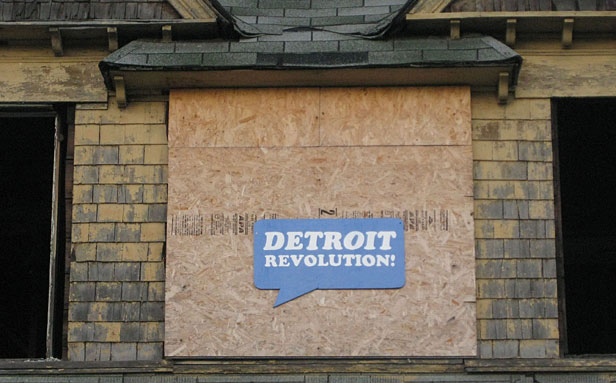Detroit’s city leaders, backed by deep-pocketed foundations, have laid out a new plan for remaking Motor City into a thriving and sustainable metropolis. From Detroit Free Press columnist Brian Dickerson:
[P]rops to Mayor Dave Bing and the Detroit Works project he has championed for telling Detroiters the truth about their limited options for redeeming Michigan’s largest city — and reminding them how quickly those options will narrow if Detroit’s elected leaders fail to seize the moment.
Secure · Tax deductible · Takes 45 SecondsSecure · Tax deductible · Takes 45 SecondsThe Detroit Future City report unveiled Wednesday is best understood as a municipal triage plan. Squarely confronting the chasm between residents’ expectations and the city’s capacity to meet them, the report’s authors have done their best to apportion the city’s dwindling resources across a sprawling landscape of deprivation. …
Nobody will be forced to move … But if implemented, the Future City plan would codify the tale-of-two-cities scenario that already exists, formalizing the boundary between neighborhoods that retain critical mass and the more sparsely populated hinterlands where the amenities associated with urban living are generally unavailable.
The new Detroit Works Project 50-year plan for the city is sprawling and ambitious, but unlike a lot of huge strategic plans, it actually doesn’t seem completely insane. Put together after hundreds of meetings, thousands of surveys, and tens of thousands of snippets of community input, the 350-page “Detroit Future City” report is full of big, green ideas.
The plan’s recommendations for a future Detroit include building “blue and green infrastructure” to help address water and air-quality issues, creating new open space networks, including local wildlife habitat, and diversifying the city’s public transportation modes. The W.K. Kellogg, Kresge, and Ford Foundations have pledged millions to help the plan become reality.
“This is the most comprehensive framework ever established for an American city,” said Toni Griffin, director of the Technical Planning Team at the Detroit Works Project.
The report calls for adding new, large areas of greenspace, but it’s also emphatic about the need to reuse old buildings (whereas other shrinking cities have taken the approach of knocking them down en masse). From the report:
Vacant land and buildings are among Detroit’s most valuable assets for its future … Turning vacant land from burdens to assets will take more than changes in specific policies and practices. ALL PUBLIC AGENCIES—WHETHER CITY, COUNTY, OR STATE—WILL NEED TO CHANGE HOW THEY THINK ABOUT LAND, AND MAKE EQUALLY FUNDAMENTAL CHANGES TO THE WAY THEY ACQUIRE, MANAGE, AND DISPOSE OF LAND AND BUILDINGS, AND THE WAY OTHER PUBLIC AGENCIES REGULATE THEM. Without such a change in thinking and practice, the inventory of vacant land and buildings in its current condition will not only fail to become an asset, it will continue to act as a roadblock to the implementation of creative strategies for land use, environmental restoration, economic growth and neighborhood revitalization.
Yeah, I’ll get behind any strategic plan for reuse and sustainability that yells at backward-thinking public agencies in bold, all-caps.




